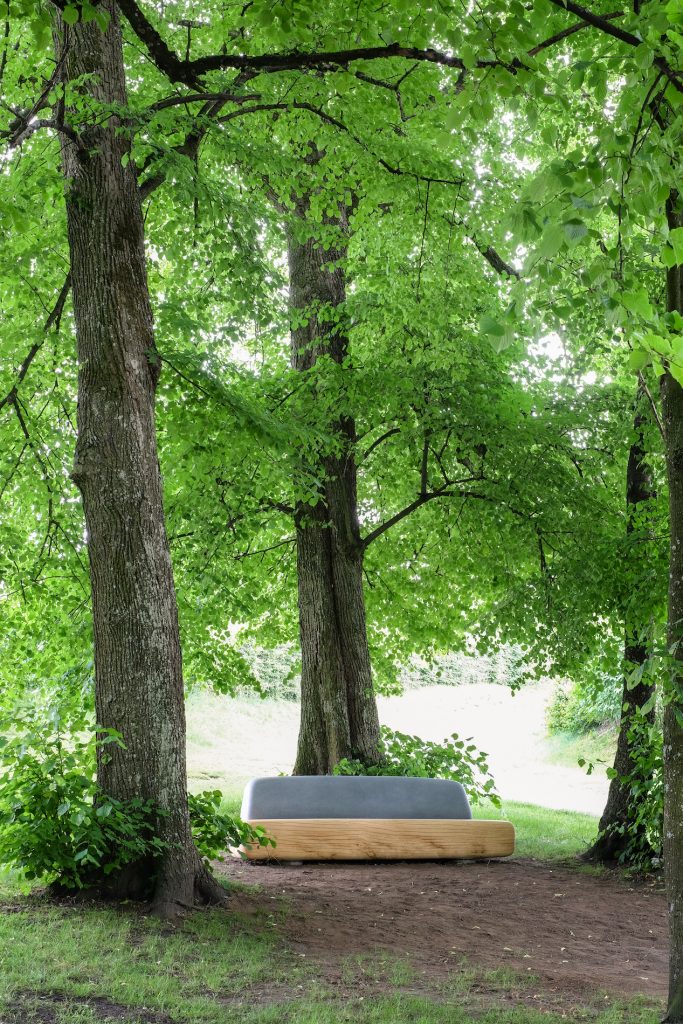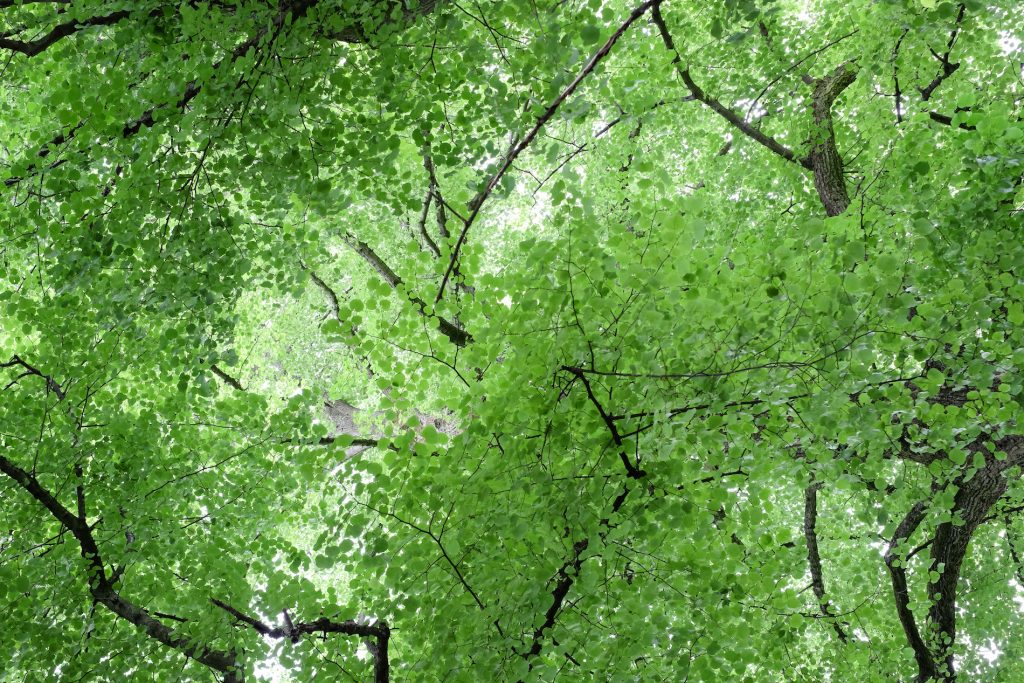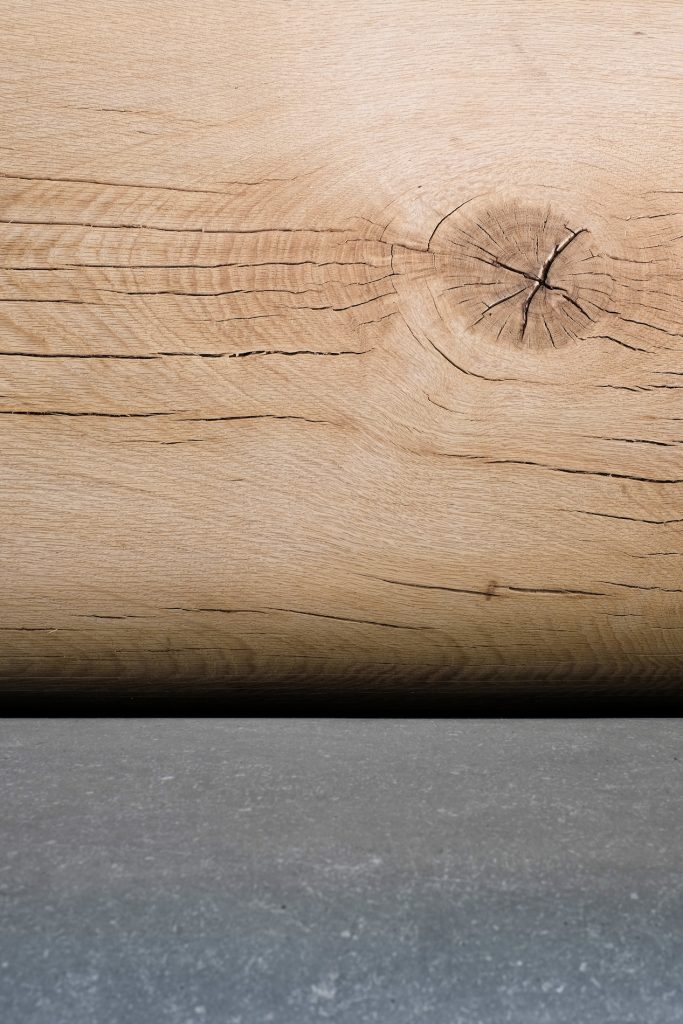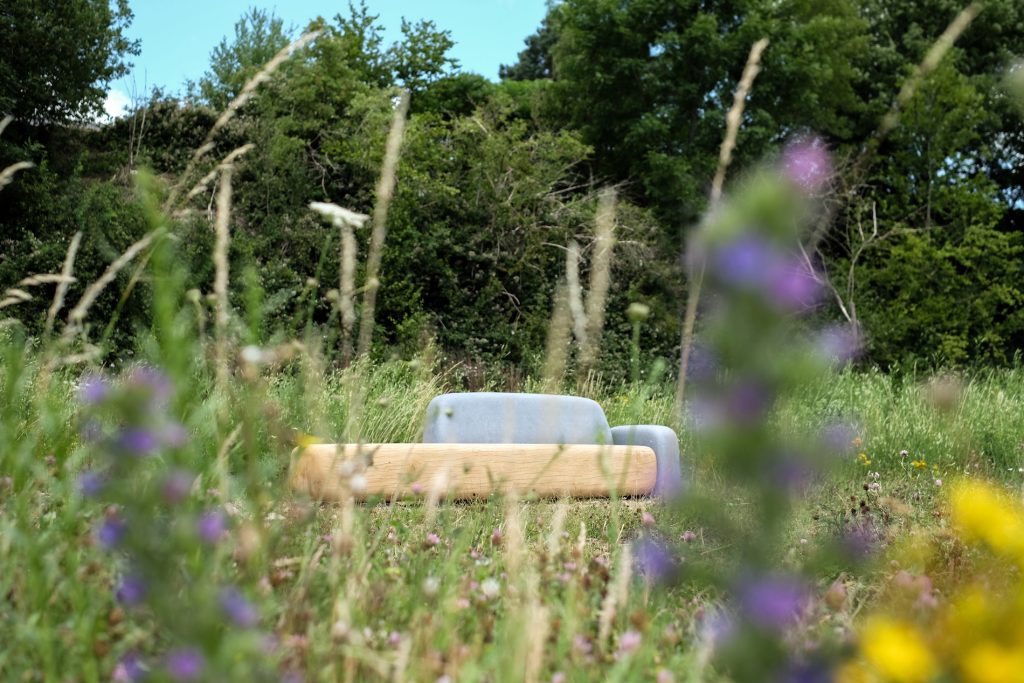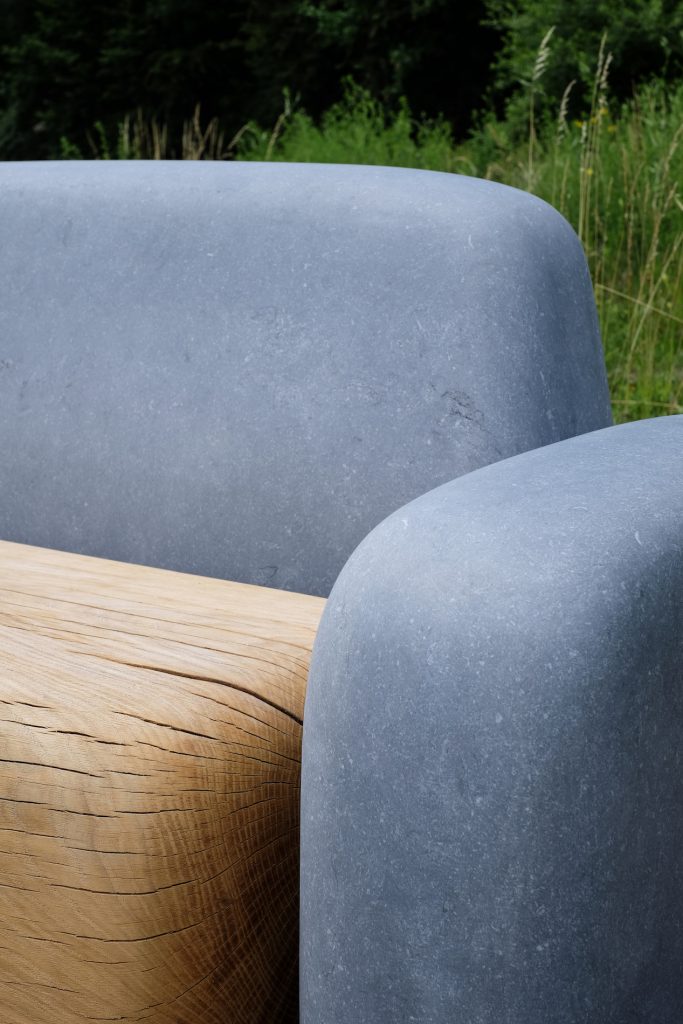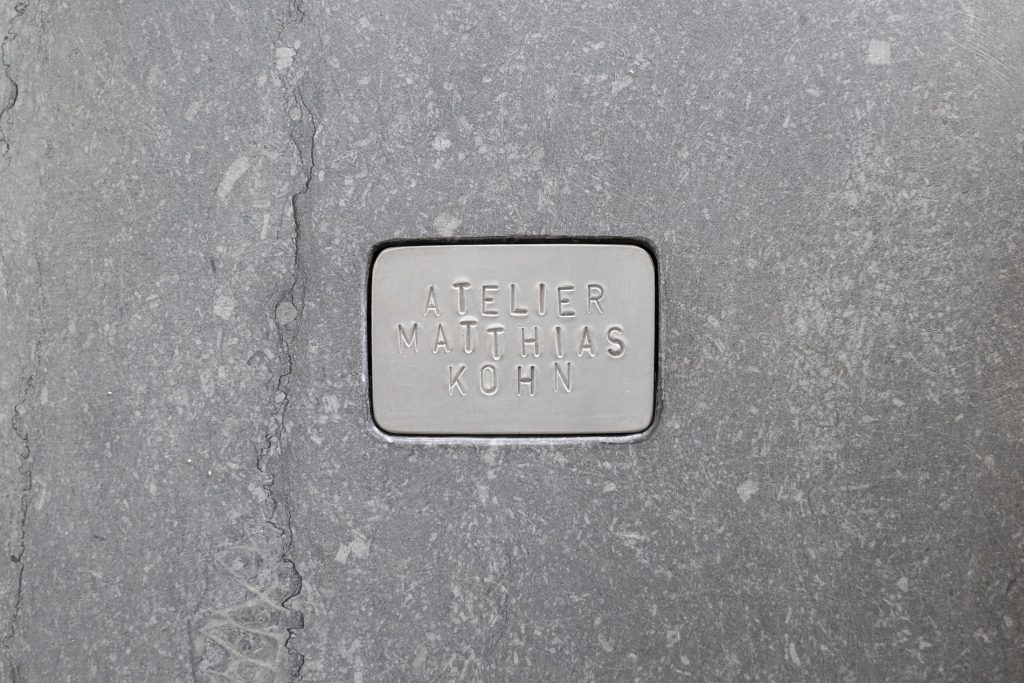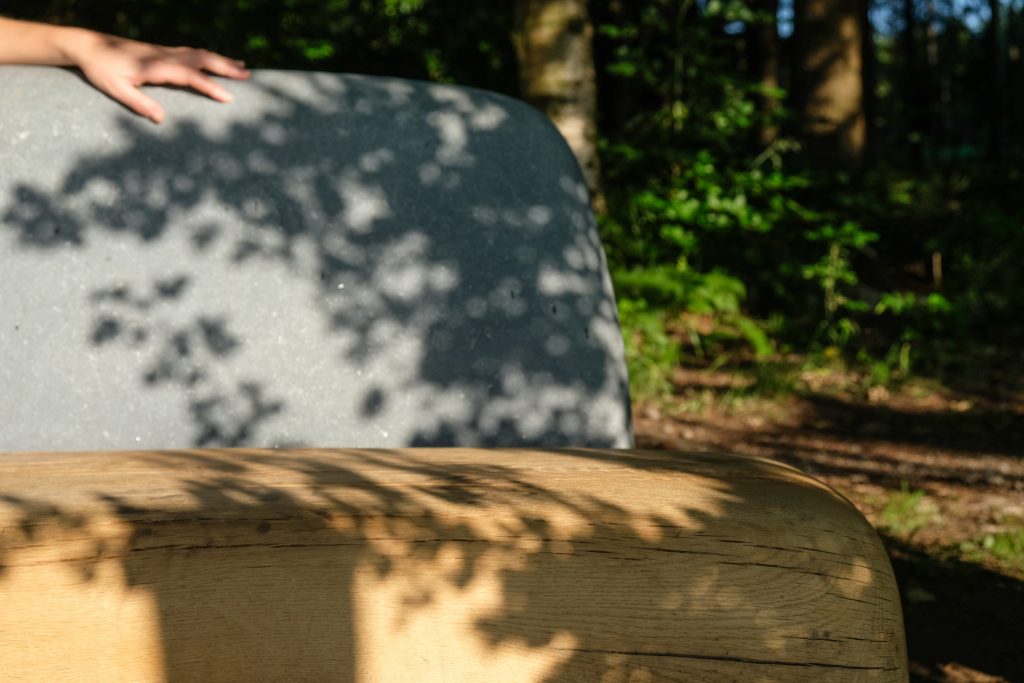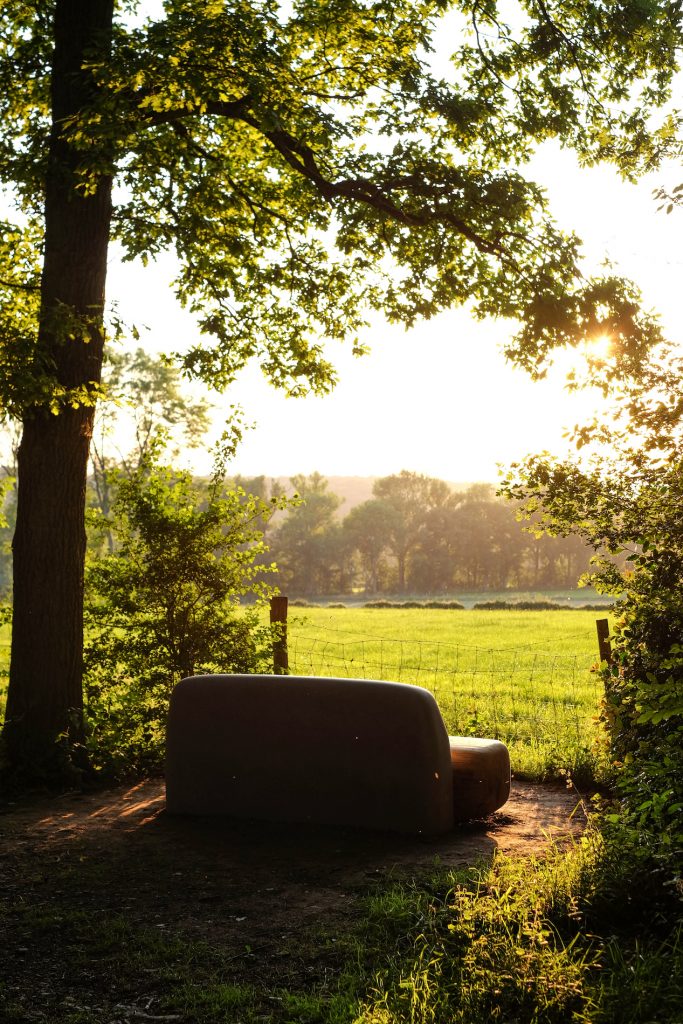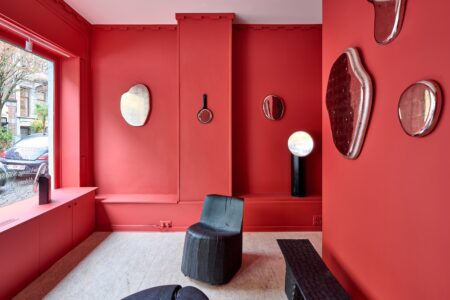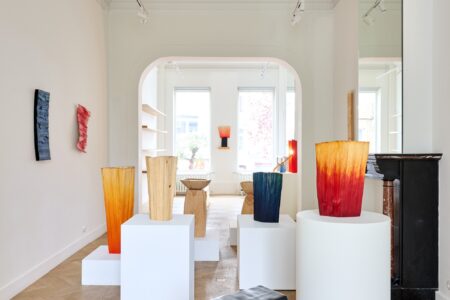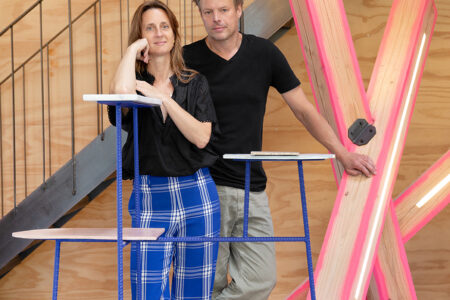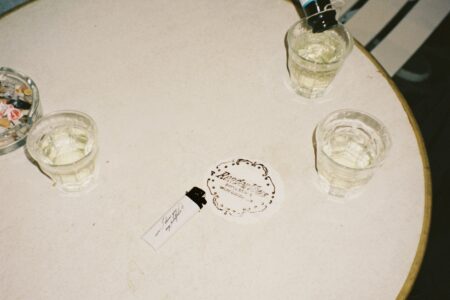Belgian Couch: About Home, Nature and Hospitality
Collaborator of our sister gallery Spazio Nobile, Matthias Kohn, developed a project about home, nature, and hospitality. In essence, the concept is based on the idea of placing furniture, most often used in private interior settings, thus adapted for this type of use, and suggesting comfort, in exterior settings, where the impact of the piece on the respective surroundings is allowed to develop fully.
In essence, Kohn’s Belgian Couch concept is based on the idea of placing furniture, most often used in private interior settings, thus adapted for this type of use, and suggesting comfort, in exterior settings, where the impact of the piece on the respective surroundings is allowed to develop fully. The particular allure lies in the conscious break with convention (a couch versus a traditional bench) as well as in the artistic implementation, which plays in a calculated way with its approach to the archetype of a couch, but at the same time can and should be considered independently of this.
The backrests of the couches are made of solid blocks of Belgian bluestone, and the seats of Belgian oak, both of which are traditionally used quite widely in the region. The materials have been selected for quality, with the stone coming from a quarry south of Brussels, and the oak from the Ardennes in the southeast of the country. Upon delivery of the raw materials, the work was painstakingly carried out by hand in the artist’s studio for weeks on end. Millimeter by millimeter, the material was sculpted and honed, whereby the stone, created from fossilized digested sludge, developed a rotten odor during this process. As a counterpart, the oak used to form the seating elements also creates tension between the relationship of volumes and edges, so important for the overall effect, and immediately eye-catching. A very slight curve with an ultimate height of just a few centimeters follows the length of the seat and harmonizes with the lines and proportions of the entire structure. In two places, the solid oak trunk rests on the rounded ends of a concrete foundation. The wood seat does not, therefore, lie flush on the ground, nor do the sides have direct contact with the stone back. The massive tree trunk, still recognizable as such when viewed from the side, appears weightless and seems to float. The three couches differ in their details; for example, the proportions or the arrangement of the backrest, seat, and armrests vary from couch to couch.
Once the work leaves the studio, those processes which the sculptor can factor into his design, but over which he has little control, begin to take over. In this case, the Belgian couches are exposed to the elements. Not only the wood, which will turn grey over the decades and come to match the stone but also the untreated stone will change over time. Wherever people touch the stone, it will be polished and darken, and it is not unlikely that damage will be done to the stone and the wood through the carving of vows of love, a not completely unwelcome appropriation on the part of the visitor. Questionable markings can, if necessary, simply be sanded away thanks to the generous thickness of the material, but the natural patina should be preserved as far as possible.
Eynatten, in the municipality of Raeren. Hidden in a lime grove, which forms a green room seemingly created for precisely this purpose, the couch offers a view through the leafy green to a pond with a fountain. The sophistication of the design can be seen particularly well with this couch. Viewed from the front, a slight, smooth curve, which also indicates a line of tension, gently sweeps along the entire length of the couch. This curve varies the dimensions of the couch by only a few centimeters on any given side, but nevertheless significantly changes the impact of the different volumes on the viewer.
The municipality of Lontzen, at the former railway station Herbesthal. After a sharp turn, a crumbling lane leads down to railroad tracks, where the couch, here assuming the shape of a chaise longue, appears unexpectedly in the middle of a flowering meadow. Located on the site of the former station building, which was torn down in 1983, the couch stands exactly where the second-class waiting room used to be, as indicated by a depiction of the floor plan on a nearby sign.
The ambivalence between interior and exterior space evoked by this couch is compounded by the fact that this space was once enclosed by real walls, the position of which can be traced by knee-high markers. The space that is formed naturally in the other locations can only be imagined here.
In Eupen, the couch perches at the edge of civilization: caught between the town and the Hohe Venn, where the darkness and the chill send shivers down the spine. Over the course of the day, the bluestone warms up slowly and evenly, ultimately absorbing the energy of the early evening sun. Where it lies in the shade, the stone remains pleasantly cool. Facing the valley, the wood of the seat also absorbs the heat, and the ergonomics of the couch persuade the visitor to let go, gently pushing him into a comfortable seated position. This location possesses an extraordinary quality due to the couch’s position at the edge of the forest and the sweeping view over the sloping fields towards Eupen. The visitor has the feeling of looking out an open window from the protective confines of his own four walls. This contemplative experience, reinforced by the deliberate placement and the unexpected comfort of the couch, fully unfolds at the moment a feeling of inner peace is allowed to take hold.
About Matthias Kohn: after an apprenticeship as a stone sculptor, Kohn completed a degree at the academy for craft and design in Aachen. This was followed by several years as a freelancer in various ateliers in Europe. Since 2014 he works in his studio in Aachen for international clients on free and applied projects for private and public spaces.
